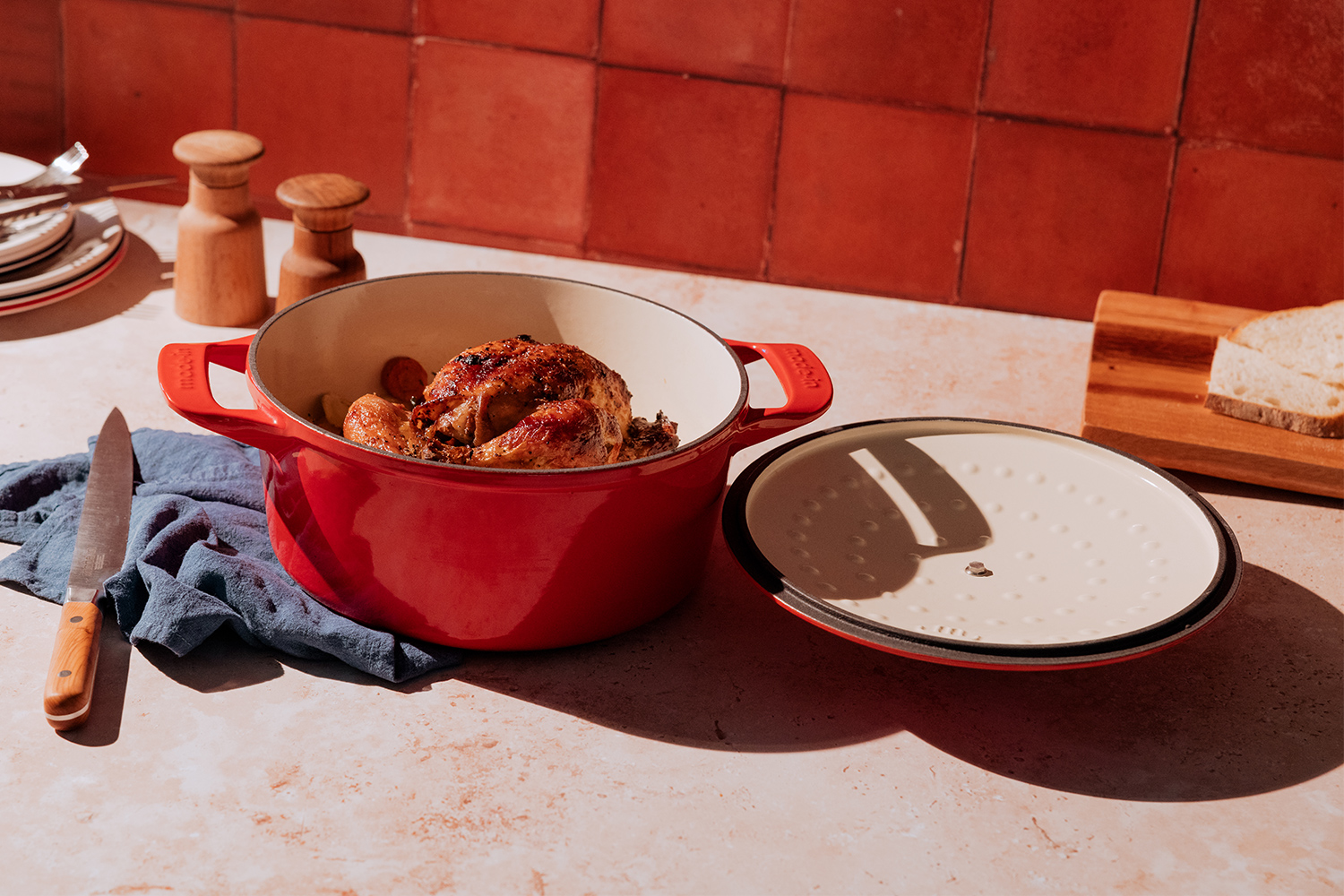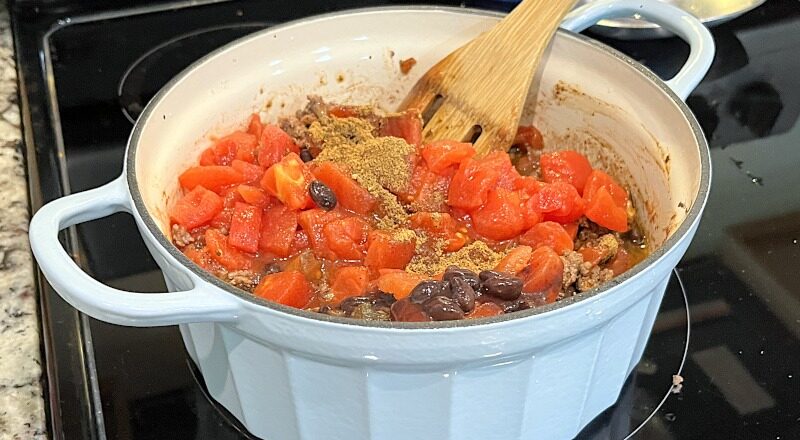Cooking a pork roast in a Dutch oven is a delightful culinary experience. If you’re wondering, how long do I roast a Dutch oven pork roast for a terrific meal, you’ve come to the right place. This comprehensive guide will provide all the answers and tips you need.

What is a Dutch Oven and Why Use It?
A Dutch oven is a versatile and durable cooking pot, typically made of cast iron and often coated with enamel. Its unique heat retention and distribution properties make it perfect for braising, stewing, and roasting. Cooking a pot roast in a Dutch oven ensures even cooking and a moist, tender result.

Why Choose Pork Roast in a Dutch Oven?
Pork roast is a popular choice for many home cooks due to its rich flavor and versatility. Using a Dutch oven to cook pork roast allows you to slow-cook the meat, resulting in a deliciously tender and flavorful dish. The heavy lid of the Dutch oven traps moisture, preventing the meat from drying out.

Types of Pork Roast
- Pork Shoulder: Also known as pork butt, it’s ideal for slow roasting.
- Pork Loin: A leaner cut that cooks faster than shoulder but can dry out if overcooked.
- Pork Belly: Fatty and flavorful, best when cooked until the fat renders and the meat is tender.
Preparing Your Dutch Oven for Roasting
Before you begin, ensure your Dutch oven is clean and well-seasoned. If you need tips on cleaning your Dutch oven, check out this guide from The Pioneer Woman.
Ingredients for a Perfect Dutch Oven Pork Roast
To achieve a perfectly roasted pork in a Dutch oven, you’ll need the following ingredients:
- Pork roast (shoulder, loin, or belly)
- Olive oil
- Salt and pepper
- Garlic
- Onions
- Carrots and potatoes
- Herbs (thyme, rosemary, or sage)
- Broth or wine for basting
Step-by-Step Guide to Roasting Pork in a Dutch Oven
Step 1: Preheat Your Oven
Preheat your oven to 325F (160C). This low and slow approach ensures even cooking.
Step 2: Season the Pork Roast
Rub the pork roast with olive oil, salt, and pepper. Insert garlic cloves into small slits cut into the meat.
Step 3: Sear the Meat
Heat your Dutch oven on the stovetop and sear the pork roast on all sides until browned. This step locks in the flavors.
Step 4: Add Vegetables
Remove the pork roast and add onions, carrots, and potatoes to the Dutch oven. Saut until slightly browned.
Step 5: Return the Pork Roast to the Dutch Oven
Place the pork roast back into the Dutch oven on top of the vegetables. Add herbs and broth or wine.
Step 6: Cover and Roast
Cover the Dutch oven with its heavy lid and place it in the preheated oven. Roast for about 3 hours for a pork shoulder or 1.5 to 2 hours for a pork loin, until the internal temperature reaches 145F (63C).
Step 7: Rest the Meat
Remove the Dutch oven from the oven and let the pork roast rest for at least 10 minutes before carving. This allows the juices to redistribute throughout the meat.
Adjusting Cooking Times for Different Roasts
Pork Shoulder
A pork shoulder benefits from low and slow cooking. Plan for about 3 to 4 hours for a 3 to 4-pound roast.
Pork Loin
A leaner cut, pork loin cooks faster. A 2 to 3-pound roast will take approximately 1.5 to 2 hours.
Pork Belly
For a 2 to 3-pound pork belly, cook for about 2.5 to 3 hours, ensuring the fat renders properly.
Common Mistakes to Avoid
Overcrowding the Dutch Oven
Ensure there’s enough space for heat circulation around the meat and vegetables. Overcrowding can result in uneven cooking.
Skipping the Searing Step
Searing the meat locks in the flavors and provides a delicious crust.
Not Using a Meat Thermometer
To ensure the pork is cooked to perfection, use a meat thermometer to check the internal temperature.
Enhancing Flavor with Marinades and Rubs
Marinating the pork roast overnight or applying a spice rub can add extra layers of flavor to your meal. Consider a mixture of garlic, herbs, olive oil, and citrus juices for a marinade, or a mix of brown sugar, paprika, and cumin for a rub.
Pairing Your Pork Roast with Sides
Serve your pork roast with a variety of sides for a complete meal. Roasted vegetables, mashed potatoes, or a fresh salad are excellent choices. For more side dish ideas, visit this cast iron skillet guide.
How to Make Gravy from Pan Drippings
The pan drippings from your Dutch oven can be transformed into a delicious gravy. Here’s how:
- Remove the meat and vegetables from the Dutch oven.
- Place the Dutch oven on the stovetop over medium heat.
- Add flour to the drippings and cook, stirring constantly, until browned.
- Slowly whisk in broth or water until the gravy thickens.
- Season with salt and pepper to taste.
Resting and Carving the Pork Roast
Let the pork roast rest for 10-15 minutes after roasting to allow the juices to redistribute. Carve the roast into slices against the grain for maximum tenderness.
Storing Leftovers
Store any leftovers in an airtight container in the refrigerator for up to 3 days. Reheat gently in the oven or microwave to avoid drying out the meat.
Cleaning Your Dutch Oven
Proper cleaning of your Dutch oven ensures its longevity. Avoid using harsh detergents or metal scrubbing pads. Instead, use warm water, mild soap, and a non-metal brush.
FAQs
How do I know when the pork roast is done?
Use a meat thermometer to check the internal temperature. It should reach 145F (63C).
Can I cook a frozen pork roast in a Dutch oven?
It’s best to thaw the pork roast in the refrigerator before cooking for even results.
What if my pork roast is too dry?
Ensure you’re not overcooking the meat and that you’re using a proper roasting method with sufficient moisture.
As an Amazon Associate, I earn from qualifying purchases.

